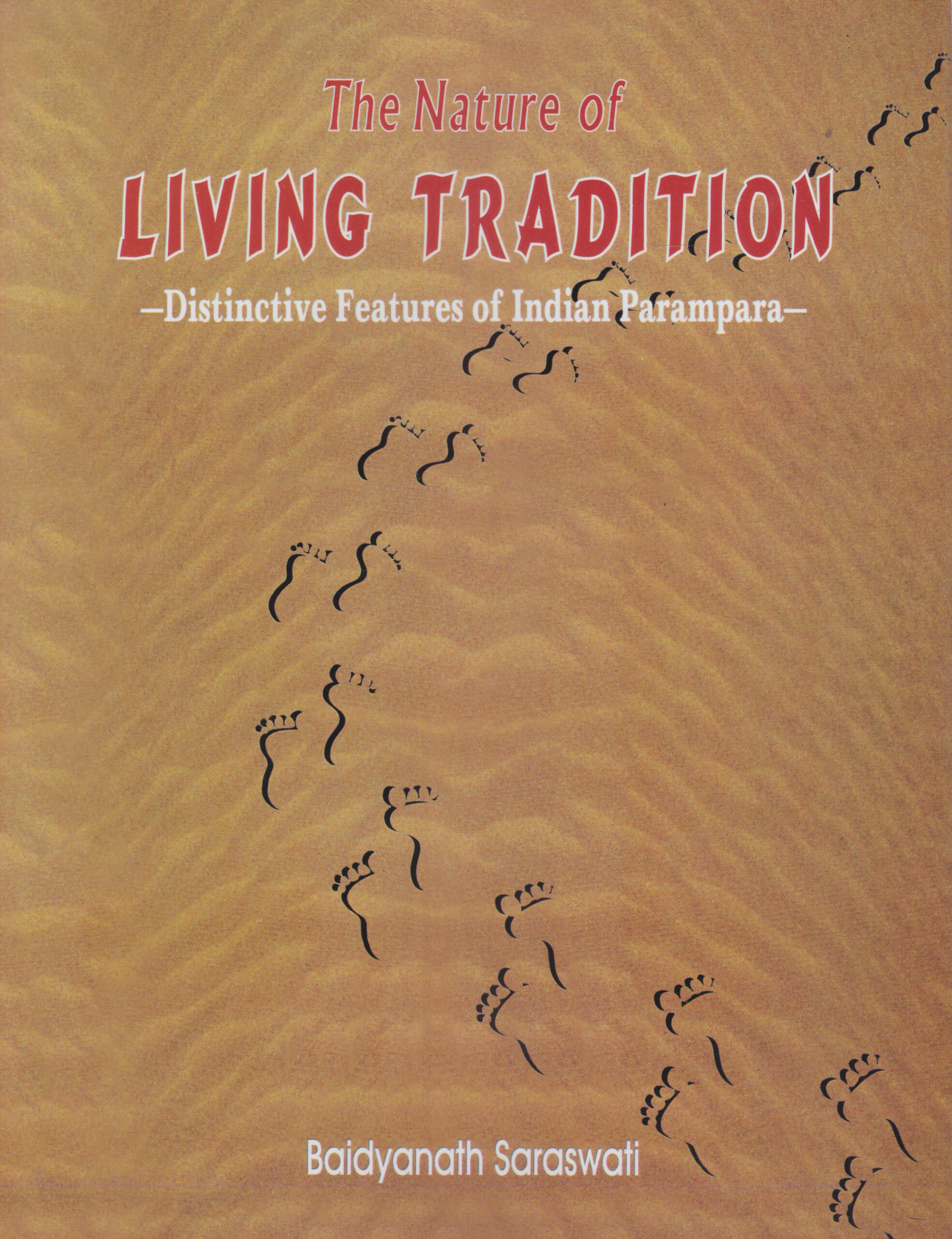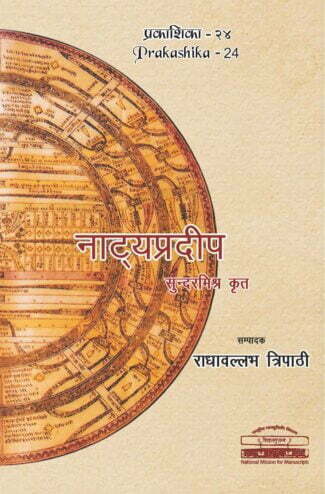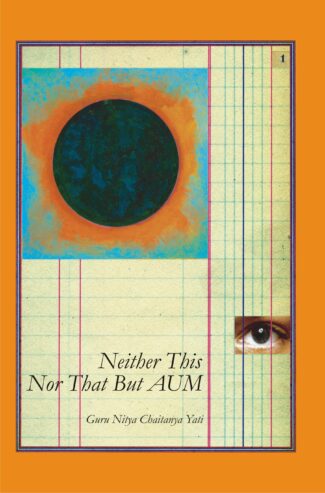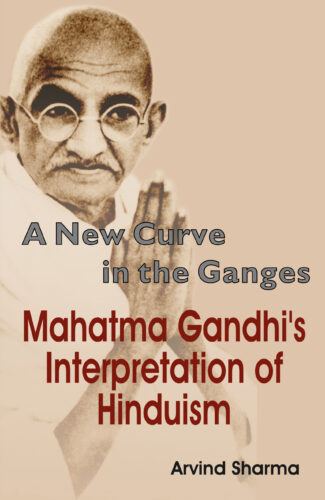Showing 631–640 of 1165 results

Scholars reflect on anthropological, philosophical, spiritual, musical, poetical and experiential dimensions to examine diverse questions on Indian parampara its source and transmission, the parent of its primal seed, sustaining the flow of parampara or tradition and whether the individual artist must necessarily confront parampara to sustain creativity.
Indian Parampara is a response to secular Western thought on tradition and modernity. Presented here are contributors from a distinguished group of Indian scholars representing a wide spectrum of disciplines. It raises many questions: What is the source of parampara? How is it transmitted? Does it hold in potential the characteristics of all orders of knowledge? Who was the parent of its primal seed? How does the individual sustain the flow of parampara or tradition? Is the individual artist capable of sustaining creativity and initiating change? Does he have to take the path of confrontation with parampara? How does the person transcend the small I to enlarge himself into the We? What is that experience of the Self where duality between the subject and the object is lost? To answer such central questions the authors of this volume reflect on anthropological, philosophical, spiritual, musical, poetical, and experiential dimensions. This book is an important contribution to traditional thought and culture.

This bilingual volume talks about the varied problems of philosophy in terms of definition, philosophical thinking, and the relation between thought and language. Problems that confront to a reflective mind need to be analysed, clarified and resolved. The book fulfils that task.
“Nature of Philosophy is a bilingual volume in English and Hindi. It talks about the varied problems of philosophy in terms of definition, philosophical thinking, and the relation between philosophy and language. Akin to any other discipline, in philosophy too, problems concerning it need to be analysed, clarified and resolved for a proper understanding and, it is the ultimate goal of this book. Herein, problems are made clear by analysis, questioning and critical method. The clarity thus achieved prompts us for philosophical reflection to the extent of removal of the problem and a discriminate understanding of the concept. It emphatically states that since philosophical problems are the objects of reflection, philosophical reflections aim at conceptual clarity by analysis, interpretation and wisdom. The question of any sort of risk against philosophy does not hold any merit. It is because philosophy fulfils human aspirations and truth of reasoning to confront with and reflect on problems to remove them. This book offers a thumbnail sketch of the varied problems of philosophy and proffers solutions to them in an efficacious manner.”

Natyapradipa covers all the topics of dramaturgy and with an all-encompassing range and inclusivity evinces a sound understanding of the structure of Sanskrit drama. It offers novel interpretations on a number of aspects of drama. Natyapradipa is one of the richest storehouses of references to several Sanskrit plays.
The experiences and knowledge from our past are recorded in manuscripts which have been handed down to us over several thousand years. The Government of India, through the Department of Culture, took note of the importance of the vast tangible heritage and, in order to preserve and conserve as well as to make access to this wealth easy, established the National Mission for Manuscripts. In order to disseminate the knowledge content of manuscripts, the Mission has taken up several programmes such as lectures, seminars and workshops. The Mission has published the proceedings of the above-said programmes under the following series: Samrakshika (on conservation), Tattvabodha (comprises lectures based on some manuscripts delivered by eminent scholars), Samiksika (research-oriented papers as presented in the seminars), and Kritibodha (transcribed and edited text prepared at advance level manuscriptology workshops conducted by the NMM.
The National Mission for Manuscripts has taken up a project for publishing rare and unpublished manuscripts in three formats (a) Facsimile, (b) Critical edition (illustrated and single copy manuscript), and (c) Critical edition with annotation and translation. This new series has been named as Prakashika. Natyapradipa critically edited by Prof. Radhavallabh Tripathi comes under this Prakashika series.
Natyapradipa is an unpublished and original work on the principles of dramaturgy. The author Sundaramishra flourished during the sixteenth-seventeenth century. Besides Natyapradipa, he had also written a play Abhiramamani on Ramayana theme.
The unique quality of Natyapradipa lies in its comprehensive nature, it covers all the topics of dramaturgy and with an all- encompassing range and inclusivity evinces a sound understanding of the structure of Sanskrit drama. Sundaramishra offers novel interpretations on a number of aspects of drama. He has made a unique proposition through his theory of joint-dominance of two rasas in a play. He has also attempted a brilliant analysis of the pervasiveness of bindu (the point amongst the natures of the plot) with respect to all the joints and acts of a play. He frankly and reasonably criticizes such stalwarts like Dhanika and Raghavabhatta. His contribution to Sanskrit dramaturgy also lies in applying the whole theoretical framework of dramaturgy to several classical Sanskrit plays and his own play Abhiramamani.
Natyapradipa is one of the richest storehouses of references to several Sanskrit plays and with the publication of this work, Sundaramishra joins the galaxy of great stalwarts in the field of the art of drama and theatre.

This book talks about the divergent views on Natyasastra Þ its origin, concepts, philosophy, history, vritti, impact on traditional stages, relevance in modern age and stage, and its applicability in post-modern stage. It interlinks Natyasastra and the regional theatre forms with specific focus on south India.
Natyasastra of Bharatamuni, considered as the fifth Veda, has remained a Samhita with a systematic presentation of conceptual frameworks, theories and practices of Indian theatre for a few millennium years. Every performing art of India (dancedrama) has drawn both theoretical and aesthetics values from Bharata and his Natyasastra, giving continuity to a legacy, as it was written to set models and standards for actors, artisans, and the playwrights. Natyasastras discovery in the nineteenth century was a milestone in the world history of aesthetics and theatre. The subsequent researches made Bharata and his theatre a vibrant topic of global dialogue and researches. This has resulted in the discovery of different versions of the Natyasastra.
This volume discusses in detail the divergent views on Natyasastra its origin, concepts, philosophy, history, vrtti, impact on traditional stages, relevance in modern age and stage, and its applicability in post-modern stage. It also vividly talks about the interlinks between Natyasastra and the regional theatre forms with specific focus on south India. It therefore reinstates the fact that the regional theatric traditions have considerably contributed to the restructuring of Natyasastra texts.
With deliberations on varied topics, this book proudly announces that Natyasastra is not just a text, but a tradition of theatre that has remained vibrant till today, reminiscent of Indian world-view. And this makes this volume a must-study for ßwho is whoû in the theatric domain.
“The philosophies in India evolved in the process of mutual rebuttal and confirmation. The Carvaka philosophy is very unique and well-marked among Indian philosophies as it is the only philosophy in India which corroborates materialism. The twenty-first century is the century of materialism. This philosophy known as Lokayata as well as Anviksiki is a logical system. In order to qualify to be a logical system it is necessary that this philosophy refutes the concepts of other philosophies and establishes its own concepts both on logical grounds. The philosophies such as Nyaya, Vaisesika, Samkhya, Jaina and Bauddha do the same; they refute the position of other philosophies on logical grounds and establish their own philosophy on the logical basis. But we observe this deficiency in the Carvaka philosophy as this philosophy is not developed in tune with the development of other philosophies for whatsoever reasons. Everywhere this philosophy appears only as a purvapaksa not siddhanta paksa. In this book there are redressals of the criticism of Carvaka philosophy by the celebrated philosophers like Dharmakirti, Santaraksita, Kamalasila, Udayanacarya and Visvanatha Nyayapancanana as well as their rebuttal from the Carvaka point of view. This book is a reaffirmation of the Carvaka philosophy on the basis of Carvaka concepts and logical grounds. This is an invitation to the philosophers for a dialogue. “
This book represents the philosophy of language in Navya-Nyaya, based upon an analysis of the “Verbal Suffix Chapter” (Akhyatavada) of Gangesha’s Tattvacintamani. Since this chapter elaborates what kind of verbal understanding is generated and discusses related issues, the book demonstrates the main features of that philosophy of language and serves as a good introduction to that. The analysis mainly deals with Gangesha, but in some cases it refers to Raghunatha. Since the book is an attempt to pursue philological exactness and philosophical analysis, it is hoped to interest not only Sanskrit scholars, but also philosophers in general.
The book consists of four lectures. Lecture I clarifies Gangesha’s view of the meaning of the suffixes of a finite verb, which (meaning) is greatly disputed among the Navya-Nyaya philosophers, the Mimamsa philosophers, and the Grammarians. Lecture II investigates how Gangesha determines the meaning of words and illustrates that his method bears upon ontological categories of Vaisheshika. Lecture III deals with Gangesha’s “Five Definitions of Invariable Concomitance Section” (Vyaptipancaka) and elucidates the relation between meaning and the logical structure of the definitions. The lecture also provides diagrams as a tool to represent the structure. Lecture IV explains the realistic standpoint of Navya-Nyaya by clarifying the concept of the counterpositive (pratiyogin) of absence (abhava), or a thing whose existence is negated, focusing on empty terms or non-factual expressions such as “a round triangle”, “the present King of France”, “a rabbit’s horn”, and so forth. The lecture delineates how Udayana, Gangesha, and Raghunatha observed and, as the time passed, did realism thoroughly in language analysis.

Are you faced with negative emotions such as jealousy, anger or pride? The only way to overcome these is by following the teachings of a Guru. Here is a beautiful book containing 108 teachings of a Sadguru which will lead you on the divine path.
The Nectar Words of My Master is a mala of 108 teachings, offered by an enlightened Master, that can be used as a day-by-day practical guide for spirituality. It deals with the trials of the human soul, when faced with negative emotions such as jealousy, anger or pride, and proposes a path towards the Light based on divine qualities and spiritual practice. Sri Sri Sadguru Swami Advaitananda Paramahansa always conveys eternal truth through simple speech, whenever He is being questioned by sincere seekers.

This volume, written originally in Malayalam, embodies a stimulating mystic composition, Atmopadesa Satakam (One Hundred Verses of Self-Instruction) unfolding magnificently the relationship of man with the cosmos.
The volume embodies a highly stimulating mystic composition : Atmopadesha Shatakam, literally One Hundred Verses of Self-Instruction, unfolding magnificently the relationship of man with cosmos. Written, originally in Malayalam, by Narayana Guru: a mystic, philosopher, visionary, and poet of yester-years, these verses are like the eternal beacon showing us the way to know the meaning of life through Self-awareness. The title, Neither This Nor That But . . . Aum, is derived from the last: the hundredth, verse of Atmopadesha Shatakam. The 99 verses that precede it clearly explain the This and That in which our lives become entangled. But as we progress from verse to verse, we find unveiled before us the untold magic of the silent Word: the secret of supreme realization. Guru Nitya, who is a key figure in the spiritual hierarchy of Narayana Guru, here reproduces all these ever-enlightening verses of Atmopadesha Shatakam : each in its Roman transliteration, together with its English translation, meaning and, besides these, also the guidelines for meditation. Each verse (of Atmopadesha Satakam), observes Edda Walker in her Foreword, is as perfect and complete as a rare pearl, and these perfect pearls are linked by the golden thread of pure essence, which is my essence, your essence, our inheritance.

This book is an enquiry into the past, based on the findings of Neolithic celts and tries to place the Neolithic culture in the right perspective. It presents the details of many excavations and provides valuable information helping to solve the Neolithic problem; also in understanding the transitions from wild species to domesticated ones and in food items like rice.
This book is an enquiry into the past, based on the findings of Neolithic celts and tries to place the Neolithic culture in the right perspective. It presents the details of many excavations and provides valuable information helping to solve the Neolithic problem; also in understanding the transitions from wild species to domesticated ones and in food items like rice.

This book interprets Gandhis Hinduism in terms of its characteristics. It offers insight into the cardinal changes that he brought within Hinduism and analyses his relationship with various sources of dharma and his prioritization of conscience along with the extracts from his autobiography, lending it a realistic touch.
Gandhis struggle for the Indian Independence will ever remain in the mind of all generations but no less significant was his fight for social equality of the Untouchables. He himself had suffered its pain as he was excommunicated by his caste on his return from England. For Gandhi, untouchability was that vicious aspect of Hinduism that must be eradicated. He had his own interpretation of Hinduism and called himself a Sanatani Hindu who believed in the equality of all castes and religions. An attempt has been made in this book to interpret Gandhis Hinduism in terms of its characteristic institutions, its major scriptures and its primary thought patterns. The work offers insights into the cardinal changes that Gandhi brought about within Hinduism by promoting ordinal changes within it. It analyses Gandhis relationship to the various sources of dharma and the primacy that he accorded to conscience; his reversal of the caste hierarchy by upholding the rights of the ÷udras, his emphasis on pravritti and nivritti instead of grihastha and sannyasa; his understanding of the Mahabharata, Ramayana and Bhagavad-Gita, and his preference for sadharana dharma over vishesha dharma. The book also contains various extracts from Gandhis autobiography that not only make this study realistic but also acquaint us with many hardships suffered by him. This book would be a worthy addition to any collection and is highly recommended for the scholars of Indology and Religious Studies.
| There are no products |